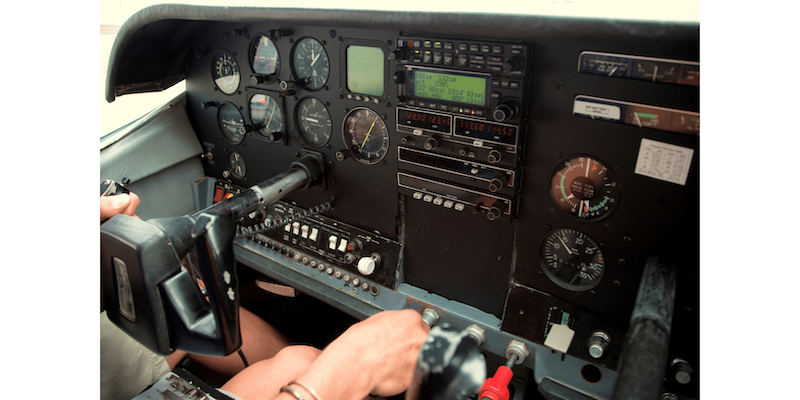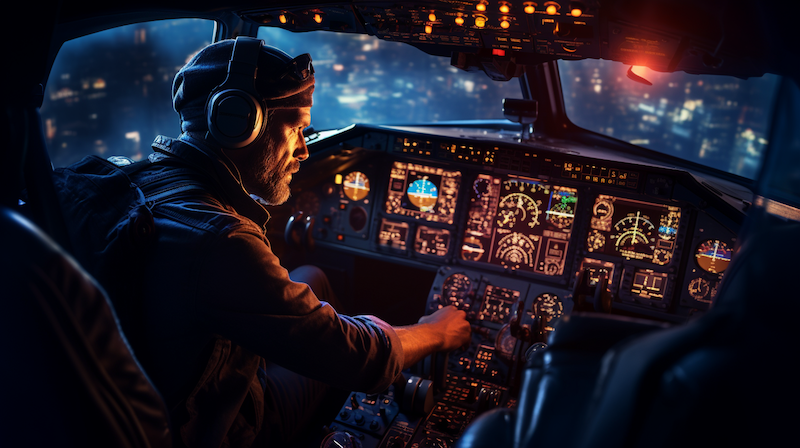I was very curious to know if a normal person was suddenly put in a pilot’s seat would they be able to land the plane? Would an ordinary person be able to land a plane?
An ordinary person or a passenger with no flying experience would not be able to land a plane on their own. But, in very ideal conditions, if the person can be communicated and instructed on how to operate the aircraft, and any other circumstances are favorable (such as the weather conditions) then a normal person could theoretically land a plane with some guidance from an experienced pilot or instructor.
The fact that there have been no instances of a passenger with no flying experience ever safely landing a commercial plane can only prove that such a feat is not possible. It would be a very miraculous feat if it happens. In this blog post, we will delve deeper into why a passenger cannot land a plane on their own.
Why can’t a person or passenger with no flying experience land a plane?
In order to fly and safely land a plane, there is a great deal of knowledge, practice, and experience that goes into it. Landing an aircraft requires a good understanding of navigation systems, air traffic control instructions, and other features of the cockpit. The pilot needs to understand the physics behind flying, such as lift, thrust and drag.
Just to give a perspective, a person learning to fly will take at least 25 hours of flying under an instructor’s supervision to go through their first solo flight without an instructor, in addition to learning all the fundamental concepts of basic flying beforehand. These are some of the simplest planes that student pilots use to learn flying and compared to some of the most complex aircrafts people normally travel in on larger scale.

Another significant challenge for inexperienced flying is the handling of flight controls. The cockpit of an aircraft is filled with an array of switches, levers, and instruments that can look very complex for someone who has never set foot in a cockpit.
Imagine a person who has never set foot in a cockpit before suddenly having to face all the control as shown in the picture. This is not a complicated jet, but rather a small plane that people use to learn flying on. Simple actions, such as adjusting the throttle or controlling the pitch, can have significant consequences if not executed properly.
Furthermore, the mental and emotional stress of being in an emergency situation can impair decision-making and critical thinking. Panic and fear can cloud judgment, leading to impulsive actions that may exacerbate the situation rather than resolve it.
Can a person or passenger with no flying experience land a plane by a talk-down?
Let’s explore an imaginary situation where the pilot(s) of the plane were suddenly incapacitated and the passengers were miraculously still conscious to grasp the situation and sit in the pilot’s seat. The best possible outcome of safely landing the plane in the situation depends on a lot of factors. The primary being the kind of aircraft, damage level to the aircraft’s structure or engine(s) if any and the weather.
If the weather is perfect and visibility is unlimited with the plane being in perfect shape a person or passenger with no flying experience can be guided over the radio to land the aircraft, if the person can miraculously be successful in following the communication over the radio, in a process called talk-down aircraft landing.
Talk-down aircraft landing is the process in which a person with no flying experience is instructed on radio to safely land an aircraft if the pilot(s) of the plane is/are incapacitated. There have been instances where passengers of small-capacity planes have landed safely following talk-down aircraft landing process.
There have been no instances in the history of aviation where bigger commercial airplanes have been landed by a passenger, mostly because such a situation hardly ever raised where the passengers were conscious and able to enter a cockpit where the pilots have been incapacitated. There was one fatal incident where one non-pilot person attempted to take control just before the tragedy took over. That brings us to the next question.
Can a passenger land a large commercial plane equipped with autopilot?
Commercial aircraft like Boeing 747s and Airbus A380s are vastly more complex than any other smaller aircraft. They have more systems, more backup systems, and more complex procedures. These large planes are not designed to be flown by someone without any training.
In a hypothetical scenario, if all the plane’s pilots were incapacitated and a passenger had to land the plane, autopilot could be their saving grace. Modern commercial aircraft, such as the Boeing 747 or Airbus A380, are equipped with advanced autopilot systems that can handle most of the flight, including the landing, without human intervention.
But, it’s important to note, the autopilot systems are not designed for passenger use and require a level of technical understanding to operate. A passenger would need detailed instructions on how to input the correct data into the autopilot system and how to respond to any potential warnings or errors.
While the autopilot can manage the majority of the landing process, the final stages still require manual input, which could be incredibly challenging for an untrained individual. So, while technically feasible, the chances of a passenger successfully landing a large commercial plane using autopilot are, realistically, extremely low.
Has anyone with no flying experience ever landed a plane safely?
Yes, there have indeed been instances where individuals with no formal flying experience have successfully landed aircraft.
- One of the most recent examples happened on May 11, 2022, when a passenger on a private plane flying from the Bahamas to Florida took over the controls after the pilot became unresponsive. The passenger, who had no idea how to fly a plane, was guided by an air traffic controller and a part-time flight instructor to land the plane at Palm Beach International Airport. The pilot was taken to a hospital and his condition was unknown. The passenger was praised for his calmness and courage in such a stressful situation.
- Another remarkable case occurred on October 8, 2013, when a woman named Helen Collins landed a twin-engine Cessna 414A plane at Door County Cherryland Airport in Wisconsin after her husband, who was the pilot, died of a heart attack. Collins, who was 80 years old and had only flown once before as a co-pilot, was assisted by another pilot who flew alongside her in a different plane and gave her instructions via radio. Collins managed to land the plane despite having low fuel, bad weather, and a broken nose wheel. She suffered some injuries but survived the ordeal.

